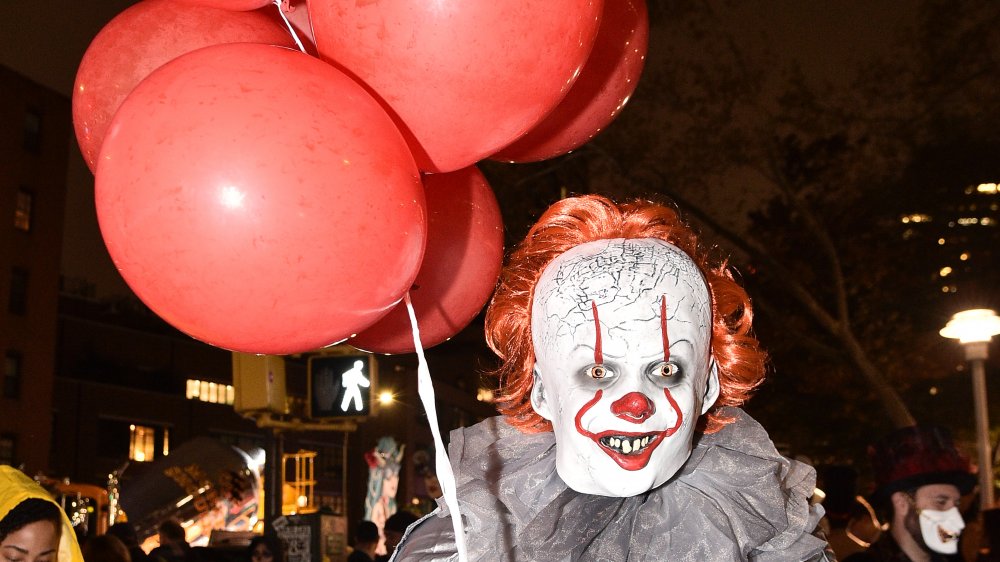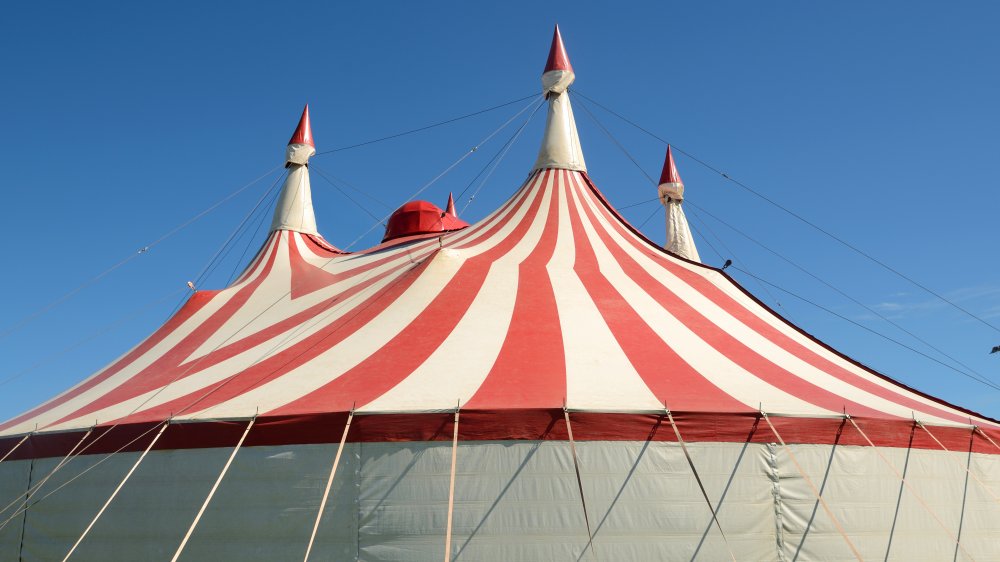The Truth Behind The Toronto Clown Riot Of 1855
Clowns, they are creepy. Anyone who's ever watched It knows this. And aside from that whole thing where clowns were popping up everywhere in 2016, there was that time they caused havoc in a city — otherwise known as the Toronto Circus Riot of 1855.
It was July 1855, according to the Torontoist, when clowns from S.B. Howes' Star Troupe Menagerie and Circus entered Mary Ann Armstrong's House on King Street in Toronto, a house of ill-repute (aka a brothel). The circus was in town for only two days and the clowns had the night off. These men, led by someone named Meyers, acted less like people cramming into a tiny car but more like tough guy roadies. The brothel, meanwhile, was the hangout of the Hook and Ladder Firefighting Company, reports Spacing Toronto, another rough and tumble group of men.
It's not clear what exactly started the fight. Either the clowns jumped the line, or a fireman accidentally hit a clown's hat. Either way, fisticuffs broke out in the brothel. The whole story could've ended there if the firemen just left well enough alone, but the next day, they gathered other locals to storm the circus. An angry crowd began pelting the tents with rocks and setting fire to wagons. The performers all ran away for their safety. It was a full-on riot. The mayor and chief of police arrived, but their presence did nothing to quell the violence. Everyone finally left when the mayor called in the militia.
No one was clowning around in this fight
In the aftermath of the riot, police claimed they could not identify anyone involved in the fight, per the Torontoist. They claimed it was too dark, or that it was organized to ensure the police knew no one. The public was incensed. This wasn't the first time the lawmen did nothing to arrest violent individuals.
At this time, Toronto did not have a regulated police force. The chief was a former tavern owner who got the job because of political connections. Toronto.com explains police constables were appointed by city counselors and training was not required. The public demanded changes be made to the force. By 1859, the force fired much of its men and began instituting reforms, though it's worth noting that these same constables were later rehired.
The circus riots led to the birth of modern policing in Toronto. There's no record of what happened to the clowns involved, however, we can only assume that they ran to other cities. Clowns looking to shed their creepy persona can claim it was clowns that brought reform to Toronto's police ... but still, just don't approach the clown with the red balloon.

